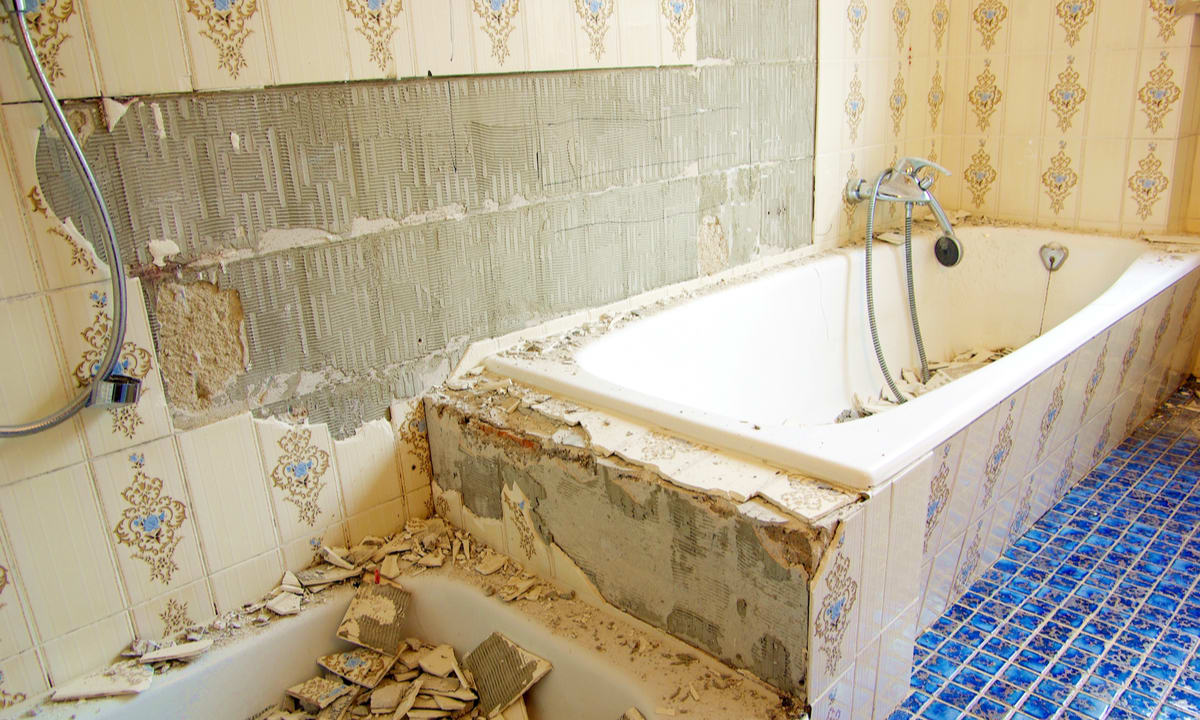What Most Homeowners Get Wrong About Bathroom Remodeling (And How to Avoid These Costly Mistakes)
Bathroom remodeling can transform your home, but many homeowners fall into predictable traps that lead to budget overruns, timeline delays, and disappointing results. Understanding the most common mistakes—from layout misconceptions to contractor selection—can save you thousands of dollars and countless headaches. This guide breaks down what typically goes wrong during bathroom renovations and provides practical strategies to help you navigate the process with confidence and clarity.

Renovating a bathroom ranks among the most valuable home improvement projects, yet it consistently challenges even experienced homeowners. The combination of plumbing complexities, space constraints, material choices, and contractor coordination creates numerous opportunities for missteps. By recognizing where others have stumbled, you can approach your project with realistic expectations and a solid plan that protects both your investment and your sanity.
Common Misconceptions About Bathroom Layouts
Many homeowners assume that keeping the existing plumbing layout will automatically save money, but this isn’t always true. While relocating fixtures does increase costs, sometimes a modest investment in rerouting pipes can dramatically improve functionality and resale value. Another widespread misconception involves space requirements—people often underestimate how much clearance is needed around toilets, showers, and vanities. Building codes typically require at least 15 inches from the toilet centerline to any wall or fixture, and 21 inches of clear space in front of toilets and sinks. Ignoring these standards can result in cramped, uncomfortable spaces or costly do-overs when inspectors flag violations. Additionally, many assume that larger tiles make small bathrooms look bigger, when in reality, the grout line pattern and color contrast have more impact on perceived spaciousness than tile size alone.
Budgeting Realities: What Homeowners Often Overlook
The typical bathroom remodel budget focuses on visible elements like tile, fixtures, and vanities, but hidden costs often derail financial planning. Structural issues discovered during demolition—rotted subfloors, outdated wiring, mold remediation—can add 10-20% to your total project cost. Permit fees, which vary by location but typically range from $200 to $1,500, are frequently forgotten until contractors request them. Temporary living arrangements or alternative bathroom access during extended renovations represent another overlooked expense. Many homeowners also fail to budget for the finishing touches that complete the space: towel bars, mirrors, lighting fixtures, and window treatments. These seemingly minor items can collectively add $500 to $2,000 to your final bill. A realistic budget should include a 15-20% contingency fund specifically for unexpected discoveries and scope changes that inevitably arise during renovation work.
Choosing Materials: The Impact on Longevity and Aesthetics
Material selection profoundly affects both the immediate appearance and long-term performance of your bathroom. Natural stone tiles like marble and travertine offer timeless beauty but require regular sealing and careful maintenance to prevent staining and etching from bathroom chemicals. Porcelain tiles provide similar aesthetics with superior durability and water resistance, making them practical for high-moisture environments. For vanity countertops, quartz engineered stone has largely replaced granite due to its non-porous surface, consistent patterning, and minimal maintenance requirements. However, quartz costs typically run 10-30% higher than granite. Shower wall materials present another critical decision—traditional tile offers unlimited design options but requires meticulous waterproofing and grout maintenance, while acrylic or composite panels provide easier installation and cleaning with more limited aesthetic choices. Faucet and fixture finishes should be selected not just for style but for durability; brushed nickel and oil-rubbed bronze hide water spots better than polished chrome, though chrome remains more affordable and widely available.
Expert Insights: Hiring the Right Contractors
Selecting the wrong contractor represents perhaps the costliest mistake in bathroom remodeling. General contractors who occasionally do bathrooms lack the specialized knowledge of plumbing-focused remodelers who handle these projects daily. Request at least three detailed written estimates that break down labor and materials separately, and be wary of bids that come in significantly lower than others—they often indicate shortcuts or incomplete scopes of work. Verify licensing, insurance, and bonding status independently rather than relying on contractor assurances. Check references thoroughly, asking previous clients specifically about communication, timeline adherence, cleanliness, and problem-solving when issues arose. Establish a clear payment schedule tied to project milestones rather than paying large sums upfront. Most importantly, ensure your contract specifies who obtains permits, how change orders are handled, what constitutes project completion, and the warranty terms for both labor and materials. A detailed contract protects both parties and provides clear recourse if disputes emerge.
Planning for the Unexpected: Hidden Costs and Delays
Even well-planned bathroom renovations encounter surprises that extend timelines and budgets. Supply chain disruptions can delay custom vanities, special-order tiles, or specific fixture models by weeks or months. Water damage behind walls, outdated electrical systems requiring upgrades to current code, or asbestos in older homes can halt work until properly addressed. Weather conditions affect projects more than many realize—high humidity slows tile adhesive curing, while extreme temperatures impact paint and caulk application. Contractor scheduling conflicts, particularly with specialized tradespeople like plumbers and electricians, can create gaps in the work sequence. Building inspector availability and approval timelines add days or weeks depending on your jurisdiction’s workload. Smart homeowners build buffer time into their project schedules, assuming the work will take 25-30% longer than initially estimated. This realistic approach reduces stress when inevitable delays occur and allows for thoughtful decision-making rather than rushed choices driven by impatience.
| Project Scope | Typical Cost Range | Timeline Estimate |
|---|---|---|
| Basic refresh (paint, fixtures, accessories) | $2,000 - $5,000 | 1-2 weeks |
| Mid-range remodel (new tile, vanity, toilet, tub refinish) | $10,000 - $20,000 | 3-5 weeks |
| Upscale renovation (layout changes, premium materials, custom features) | $25,000 - $50,000 | 6-10 weeks |
| Luxury transformation (high-end finishes, structural changes, spa features) | $50,000+ | 10-16 weeks |
Prices, rates, or cost estimates mentioned in this article are based on the latest available information but may change over time. Independent research is advised before making financial decisions.
Moving Forward With Confidence
Successful bathroom remodeling requires balancing aesthetic vision with practical realities. By understanding common layout mistakes, budgeting for hidden costs, selecting durable materials appropriate for your needs, vetting contractors thoroughly, and planning for inevitable surprises, you position your project for success. The homeowners who achieve the best results approach renovations as learning experiences, asking questions, researching options, and building relationships with knowledgeable professionals. Your bathroom remodel represents a significant investment in your home’s value and your daily quality of life—taking time to avoid common pitfalls ensures that investment pays dividends for years to come. Start with clear priorities, maintain realistic expectations, and remember that thorough planning prevents most of the costly mistakes that plague rushed or poorly conceived projects.



